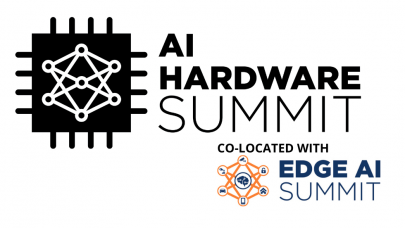
Google’s New AI-Focused ‘A3’ Supercomputer Has 26,000 GPUs
May 10, 2023
Cloud providers are building armies of GPUs to provide more AI firepower. Google is joining the gang with a new supercomputer that has almost 2.5 times the number of GPUs than the world’s third-fastest supercomputer called LUMI. Google announced an AI supercomputer with 26,000 GPUs at its developer conference on Wednesday. Read more…

Groq Designs Chip that Hands Over Controls to Software
August 25, 2022
Groq has deconstructed the conventional CPU, and designed its chip in which software takes over control of the chip. The Groq Tensor Streaming Processor Architecture follows a growing trend of software controlling system functions, which has happened in autonomous cars, networking and other hardware. The architecture hands over hardware controls of the chip to the compiler. The chip has integrated... Read more…

Video: Sneak Preview of the AI Hardware Summit
August 19, 2022
Next month the AI Hardware Summit returns to the Bay Area, bringing AI technologists and end users together to share ideas and get up to speed on all the latest AI hardware developments. The event – which takes place September 13-15, 2022, at the Santa Clara Marriott, Calif. – will be co-located with the Edge AI Summit. Both events are organized by... Read more…

AI Silicon Startup Graphcore Launches Channel Partner Program
September 23, 2020
AI compute platform vendor Graphcore has launched its first formal global channel partner program to promote and boost the sales of its AI processors and blade computing products. The formalized, all-new Graphcore Elite Partner Program follows the company’s past history of working with several... Read more…

- Click Here for More Headlines

Whitepaper
Transforming Industrial and Automotive Manufacturing
In this era, expansion in digital infrastructure capacity is inevitable. Parallel to this, climate change consciousness is also rising, making sustainability a mandatory part of the organization’s functioning. As computing workloads such as AI and HPC continue to surge, so does the energy consumption, posing environmental woes. IT departments within organizations have a crucial role in combating this challenge. They can significantly drive sustainable practices by influencing newer technologies and process adoption that aid in mitigating the effects of climate change.
While buying more sustainable IT solutions is an option, partnering with IT solutions providers, such and Lenovo and Intel, who are committed to sustainability and aiding customers in executing sustainability strategies is likely to be more impactful.
Learn how Lenovo and Intel, through their partnership, are strongly positioned to address this need with their innovations driving energy efficiency and environmental stewardship.
Download Now
Sponsored by Lenovo
Whitepaper
How Direct Liquid Cooling Improves Data Center Energy Efficiency
Data centers are experiencing increasing power consumption, space constraints and cooling demands due to the unprecedented computing power required by today’s chips and servers. HVAC cooling systems consume approximately 40% of a data center’s electricity. These systems traditionally use air conditioning, air handling and fans to cool the data center facility and IT equipment, ultimately resulting in high energy consumption and high carbon emissions. Data centers are moving to direct liquid cooled (DLC) systems to improve cooling efficiency thus lowering their PUE, operating expenses (OPEX) and carbon footprint.
This paper describes how CoolIT Systems (CoolIT) meets the need for improved energy efficiency in data centers and includes case studies that show how CoolIT’s DLC solutions improve energy efficiency, increase rack density, lower OPEX, and enable sustainability programs. CoolIT is the global market and innovation leader in scalable DLC solutions for the world’s most demanding computing environments. CoolIT’s end-to-end solutions meet the rising demand in cooling and the rising demand for energy efficiency.
Download Now
Sponsored by CoolIT
Advanced Scale Career Development & Workforce Enhancement Center
Featured Advanced Scale Jobs:
HPCwire Resource Library
HPCwire Product Showcase
© 2024 HPCwire. All Rights Reserved. A Tabor Communications Publication
HPCwire is a registered trademark of Tabor Communications, Inc. Use of this site is governed by our Terms of Use and Privacy Policy.
Reproduction in whole or in part in any form or medium without express written permission of Tabor Communications, Inc. is prohibited.
























